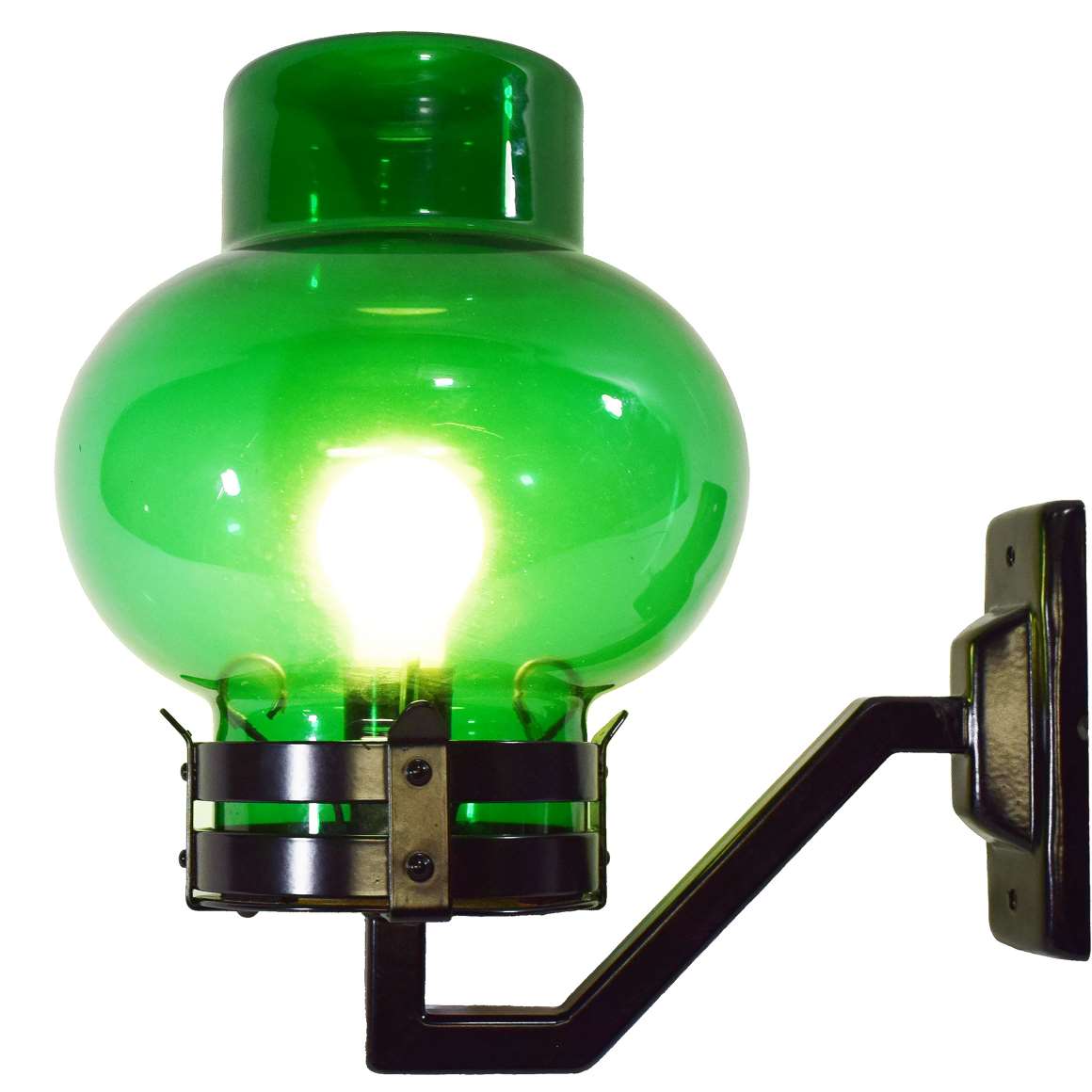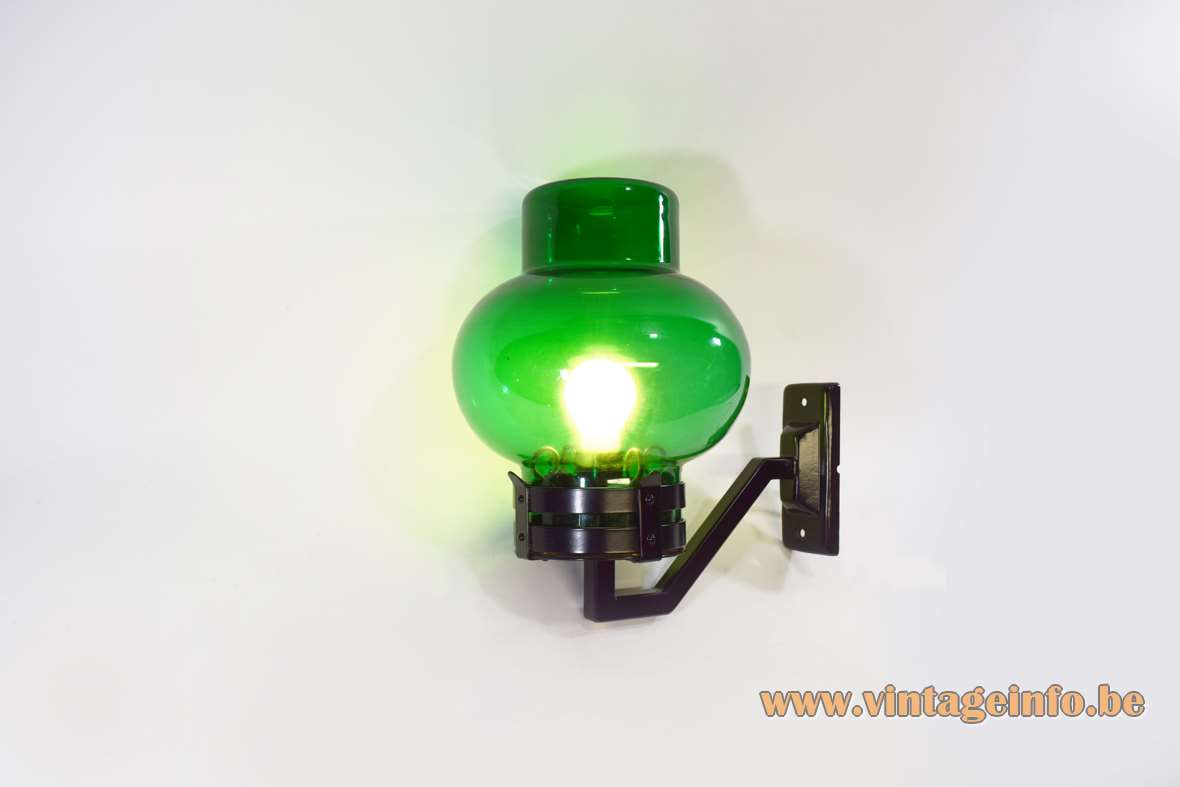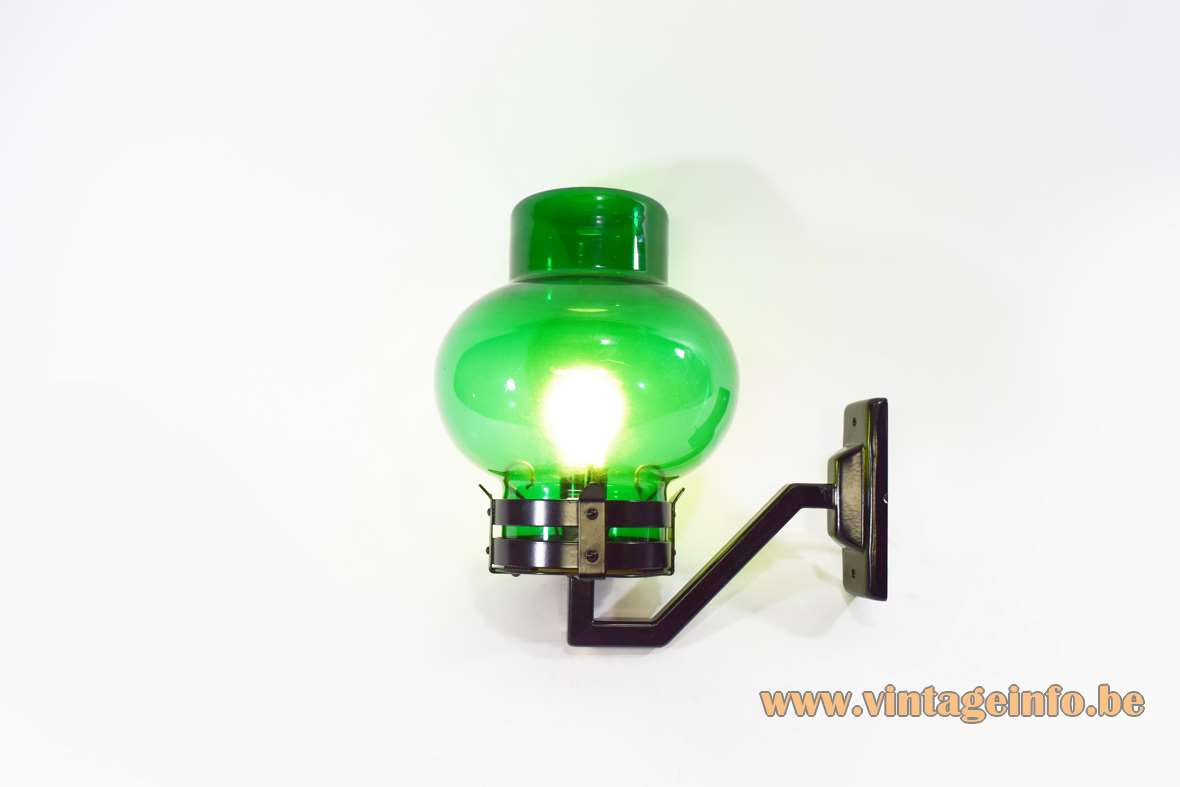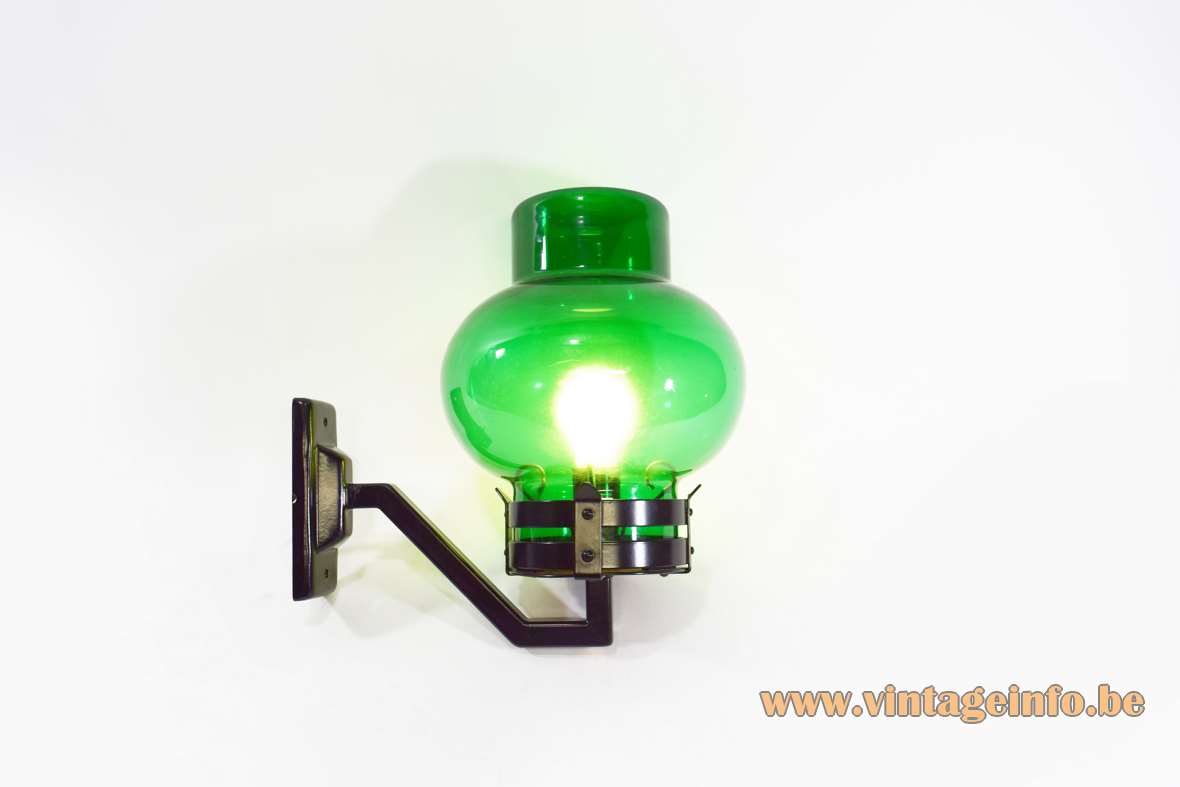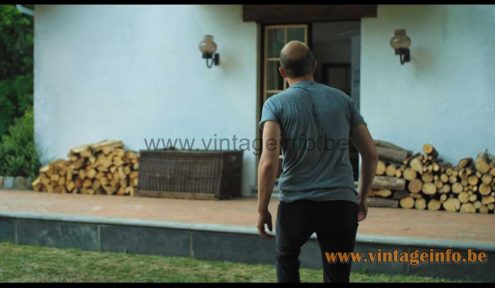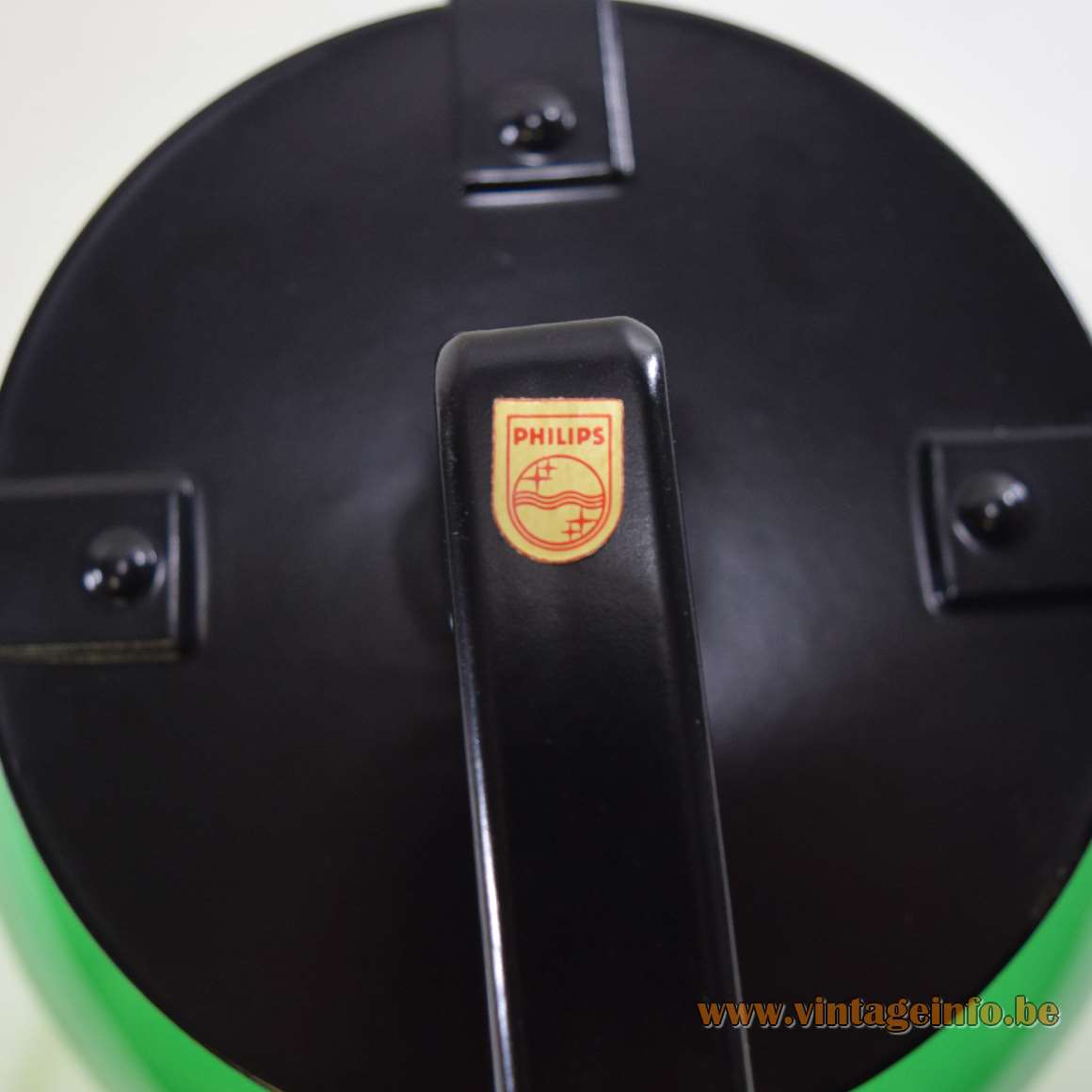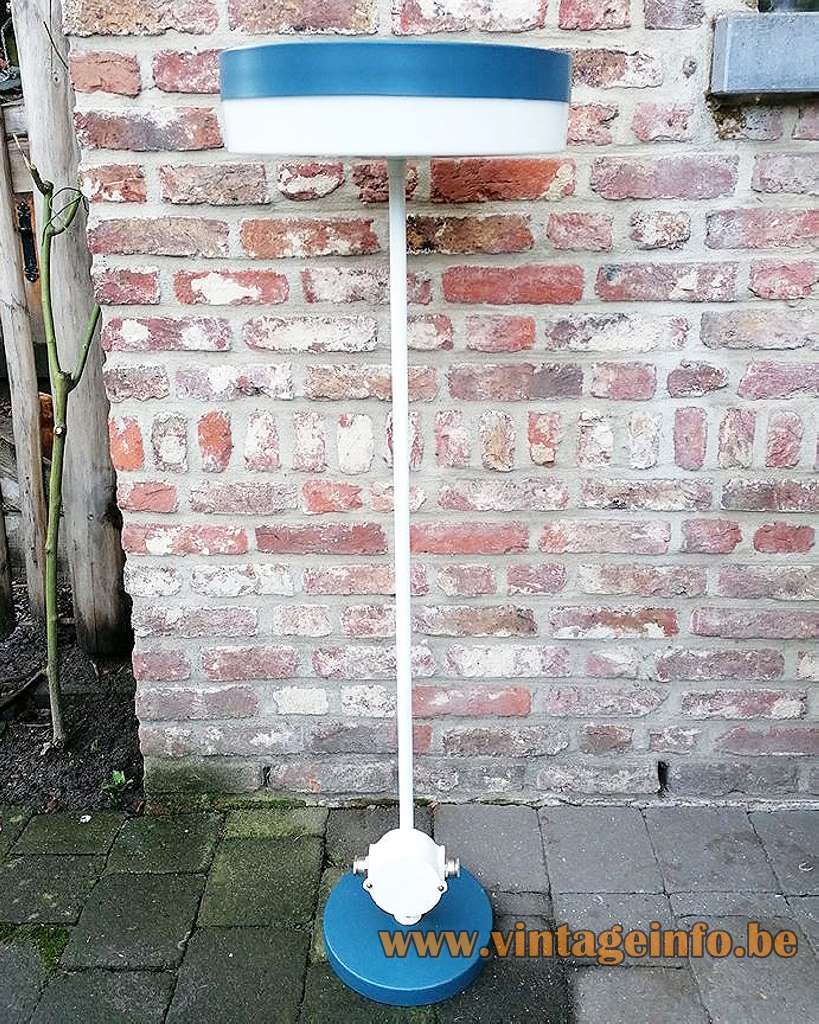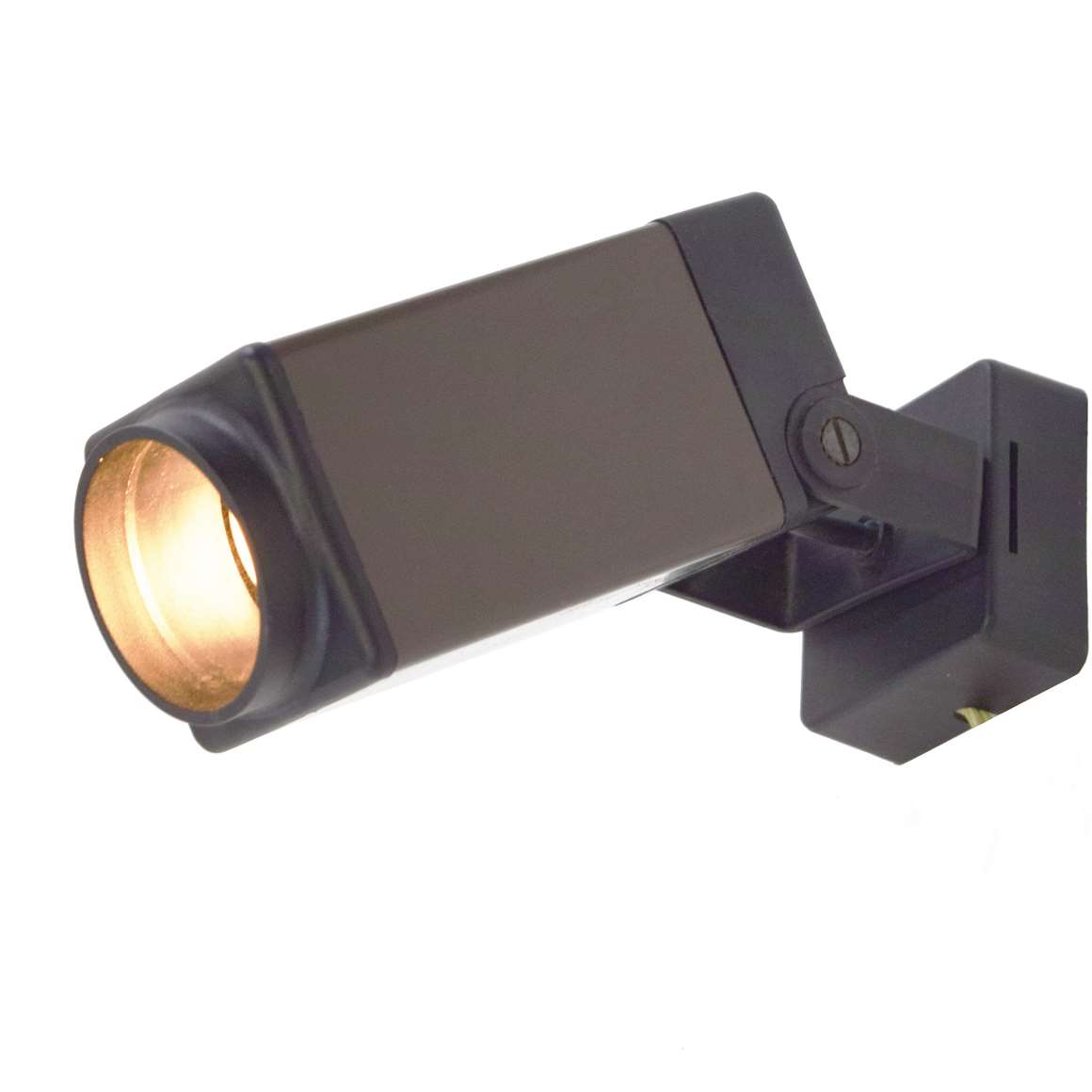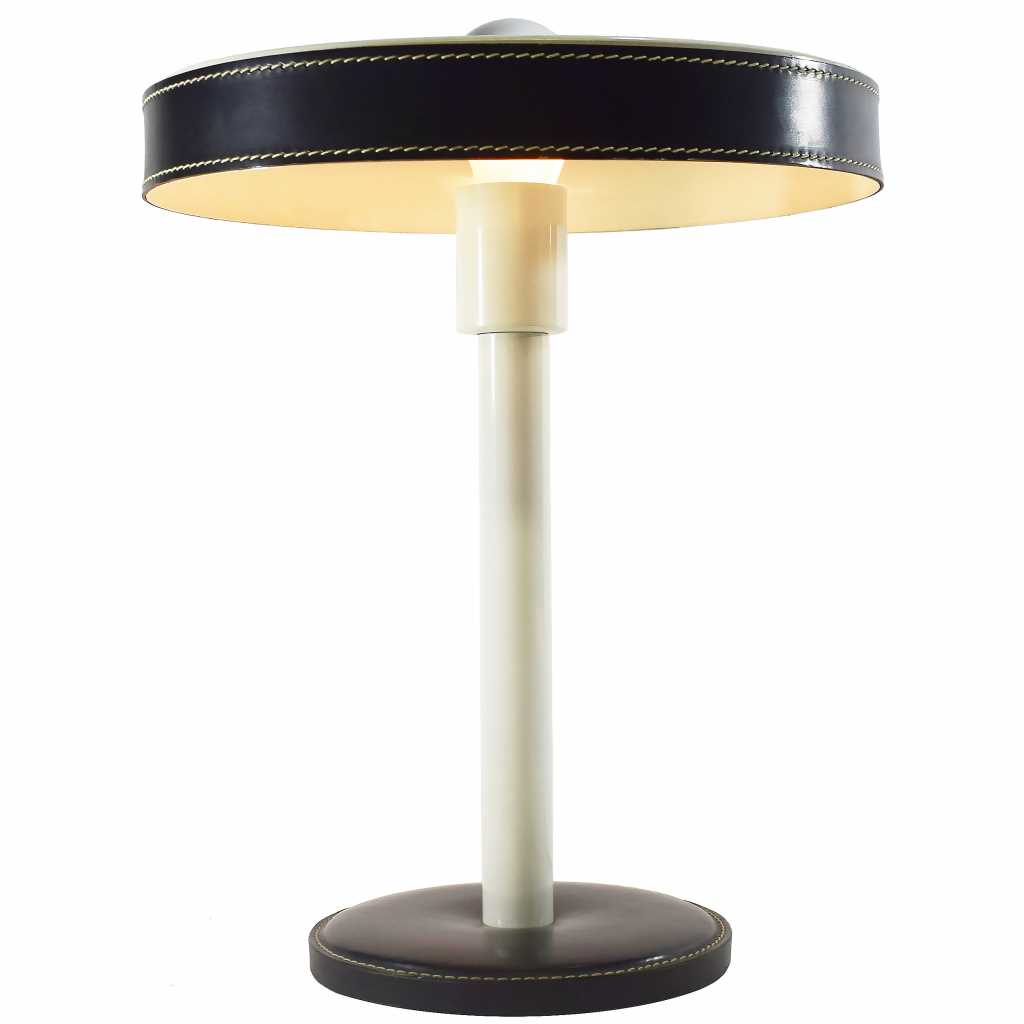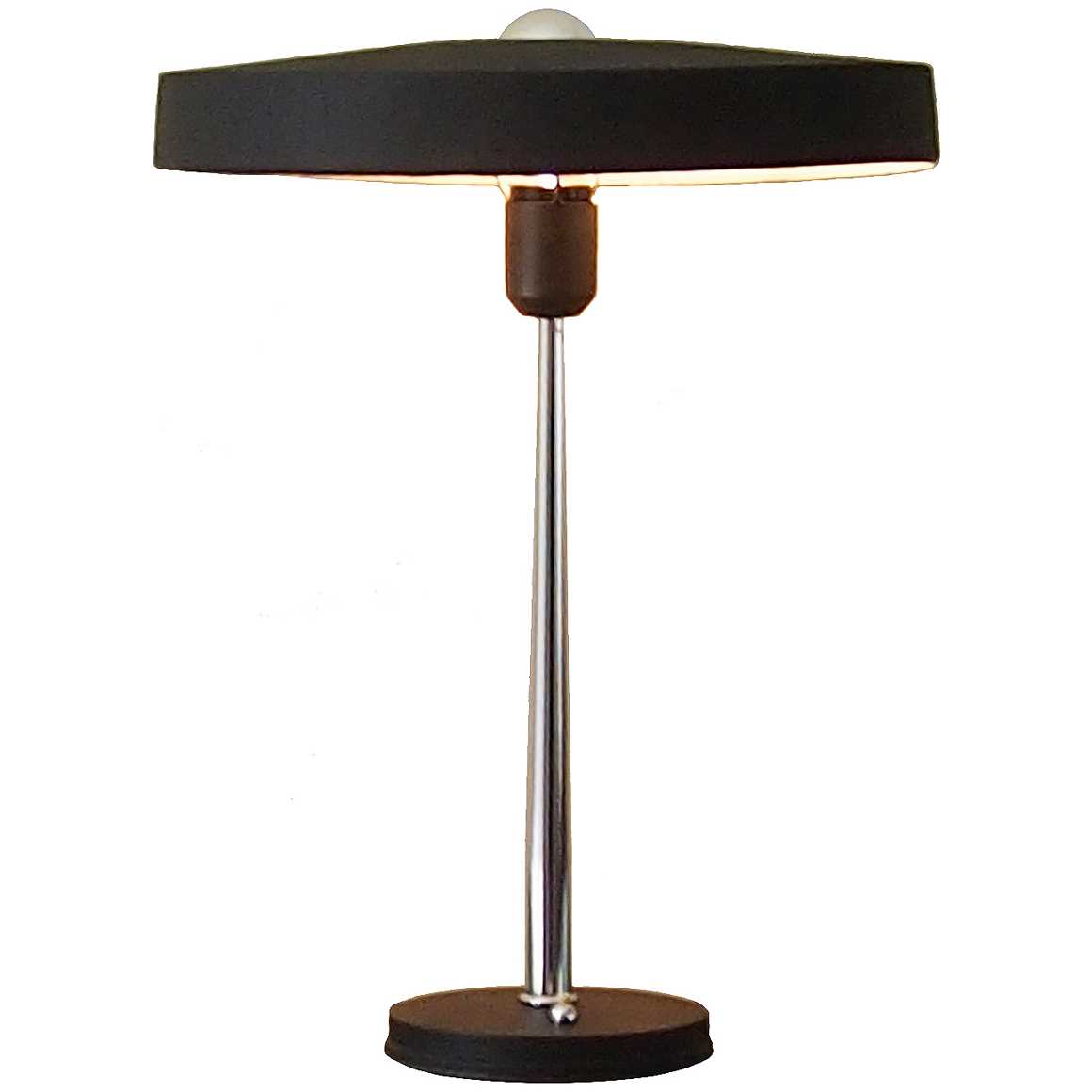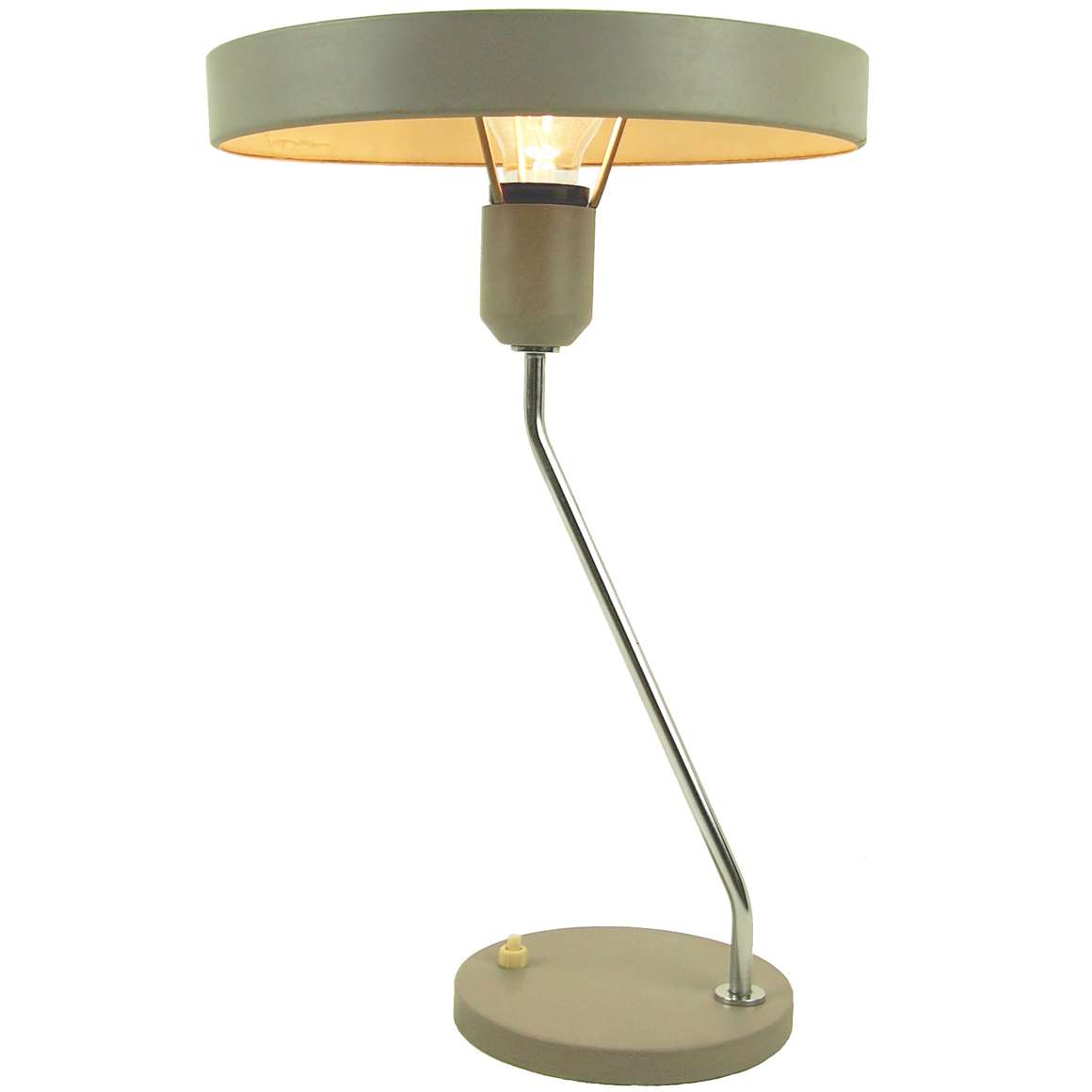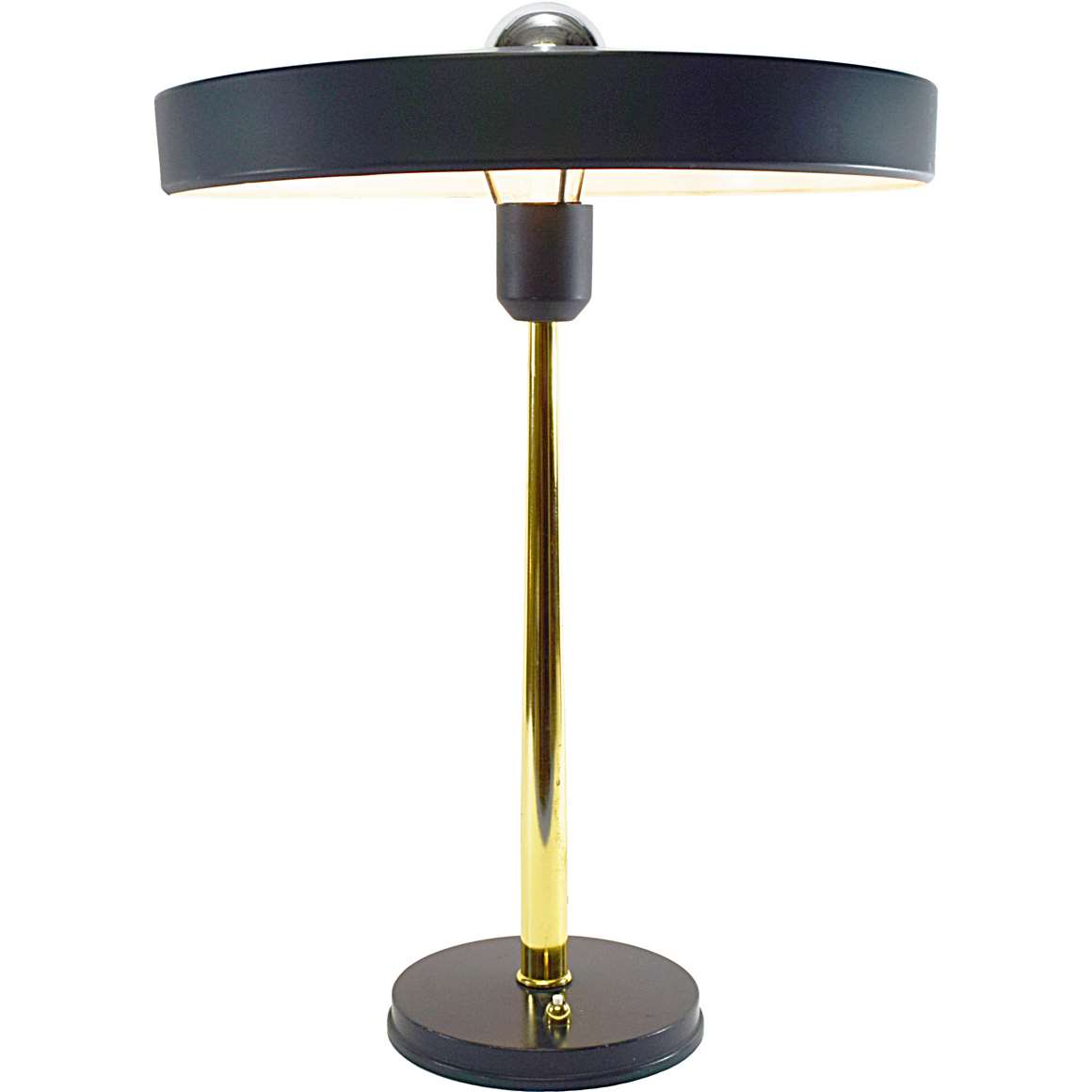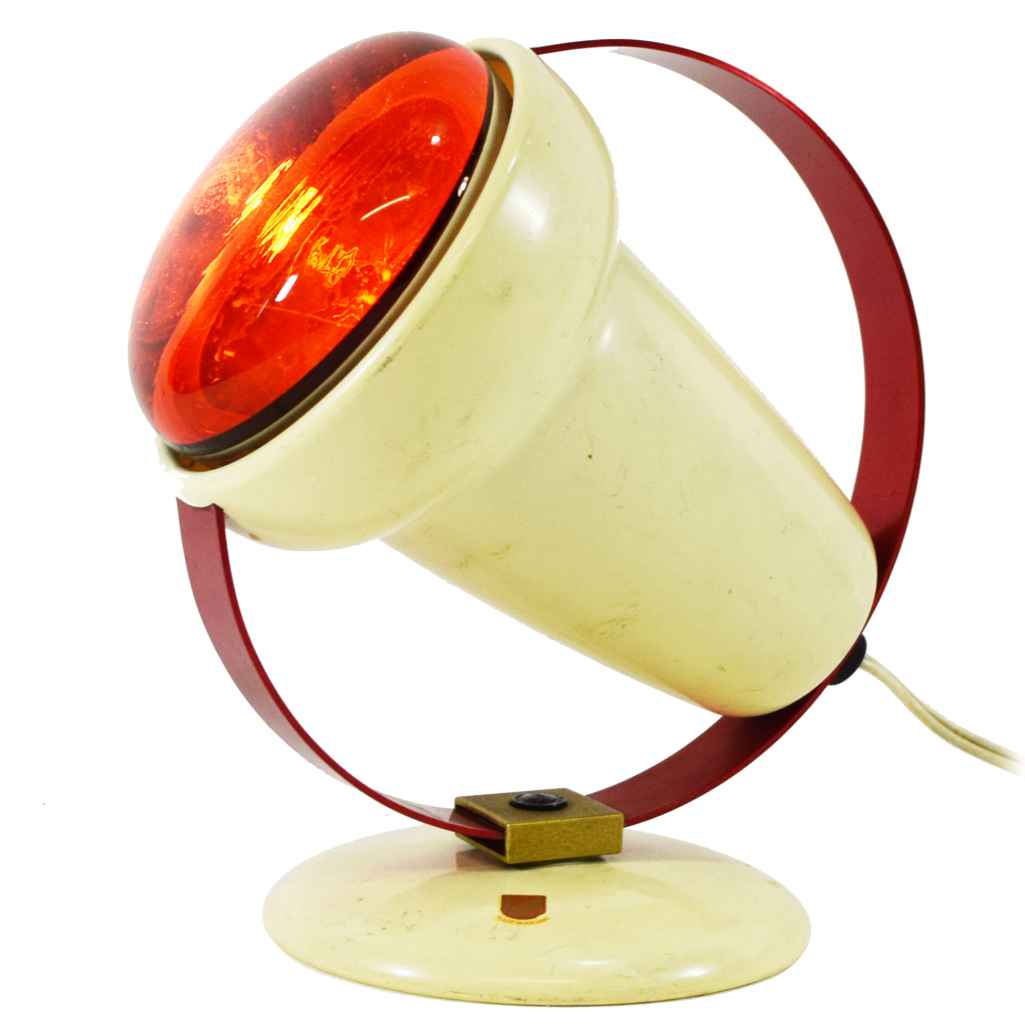1960s Philips Outdoor Wall Lamp
Lamps In The Movies
La Trêve (2018)
A 1960s Philips outdoor wall lamp appears in the 2018 Belgian crime drama television series La Trêve (The Break) season 2. Starring Yoann Blanc, Guillaume Kerbusch and Anne Coesens. It is different model, but it uses the same glass lampshade, but it’s a brown one.
Links (external links open in a new window)
The story about the Philips logo
La Trêve – The Break (2018 TV series) – Wikipedia
La Trêve – The Break (2018 TV series) – IMDb
Vintageinfo
Many thanks to Pol for the photo of the Florenville garden lamp.
1960s Philips Outdoor Wall Lamp
Materials: Black painted metal (iron) rectangular wall mount. Square black iron tubes, welded together as a folded rod. Round black iron lampshade holder. Green round crystal glass lampshade in a bollard shape. Bakelite E27 socket.
Height: 35 cm / 13.77”
Width: ∅ 24 cm / 9.44”
Depth: 36 cm / 14.17”
Electricity: 1 bulb E27, 1 x 100 watt maximum, 110/220 volt.
Any type of light bulb with an E27 socket can be used. Not a specific one preferred. For this setup a white/opaque bulb was used.
Period: 1960s, 1970s – Mid-Century Modern.
Designer: To be appraised.
Manufacturer: Koninklijke Philips N.V., Eindhoven, The Netherlands.
Other versions: This 1960s Philips outdoor wall lamp exists in several colours, as you can see. Probably some other colours were also made. In Belgium and France this lamp is named Antibes, according to the 1965 catalogue. In The Netherlands they used numbers. Most of the Philips lamps were made in Belgium.
This rare seen garden/outdoor wall lamp is from an old stock, it is NOS (New Old Stock) and was never used. That’s why the paper Philips sticker is still present and the most important: it still exists. Garden lamps from that period never lasted longer than 5 years or so. They started to rust in no time.
Below the Philips Florenville garden lamp, also a rare seen lamp from an old stock.
Koninklijke Philips N.V.
Inspired by the fast-growing electricity industry and by the promising results of Gerard Philips’ own experiments with reliable carbon filaments, his father, the Jewish banker Frederik Philips from Zaltbommel, financed the purchase of a small factory in Eindhoven, the Netherlands, on 15 May 1891.
The first years were difficult and the company was close to bankruptcy, but in 1895 Gerard’s younger brother Anton Philips joined the firm. With Anton’s commercial drive the family business expanded very quickly and the Philips brothers turned the lamp factory into the basis of what would become a major international electronics company.
To secure the supply of lamp parts, Philips very early started to make things in-house: its own machines, its own glass (from 1916) and even its own gas separation to fill lamps with argon, so it was less dependent on German suppliers during wartime. This strong vertical integration became typical for Philips and later also supported radio and medical products.
From the 1920s onward Philips did not only make lamps but also radios and even ran its own shortwave stations (PCJ and PHOHI) to promote them worldwide – an early mix of product and broadcasting.
In later sources the “first Philips shaver” is sometimes put in the early 1930s, but Philips itself dates the electric Philishave to 1939; in any case it shows how the company moved from lighting into small household and personal devices.
On 9 May 1940, the day before the German invasion, the Philips family left for the United States with a large part of the company’s capital. From there they continued operations as the North American Philips Company and kept control over the group during the war. After 1945 the headquarters returned to the Netherlands, again in Eindhoven.
After the war Philips became a broad technology group: radios, televisions, X-ray and medical equipment, and of course lighting, which remained one of its core businesses for decades. Only much later, in 2016, the lighting activities were split off and continued under the name Signify – all vintage Philips luminaires on this site belong to the period when lighting was still an integral part of Philips.
Today Philips is mainly a health-technology company. The roots are still in Eindhoven, but since 2025 the head office is in Amsterdam (Prinses Irenestraat 59).
Philips Florenville garden lamp
Height: 105 cm /41.33”
Width: 32 cm / 12.59”
This metal (iron) garden lamp was made in several colours. It has a white acrylic diffuser.
2 X 40 Watt E27 socket.
